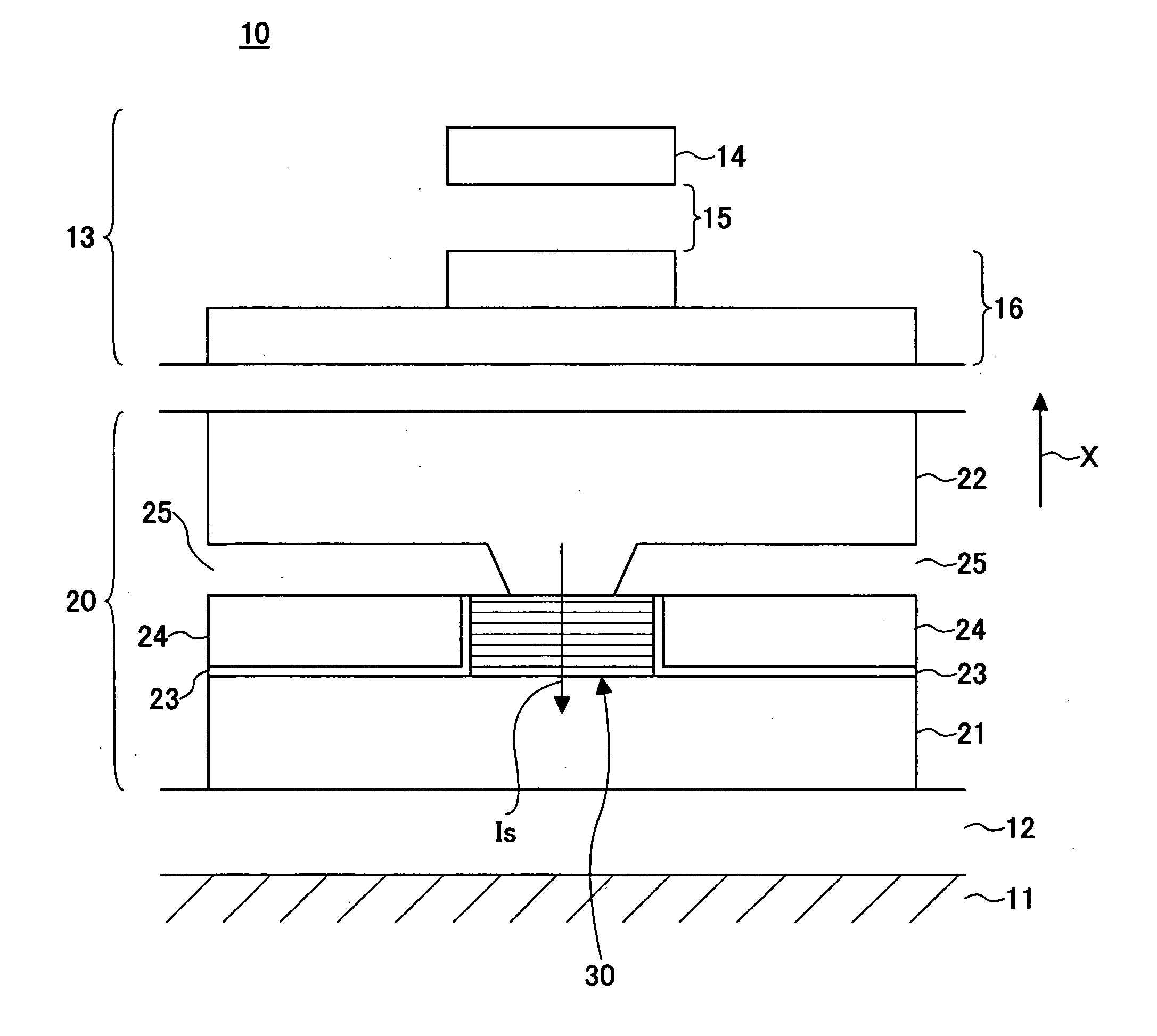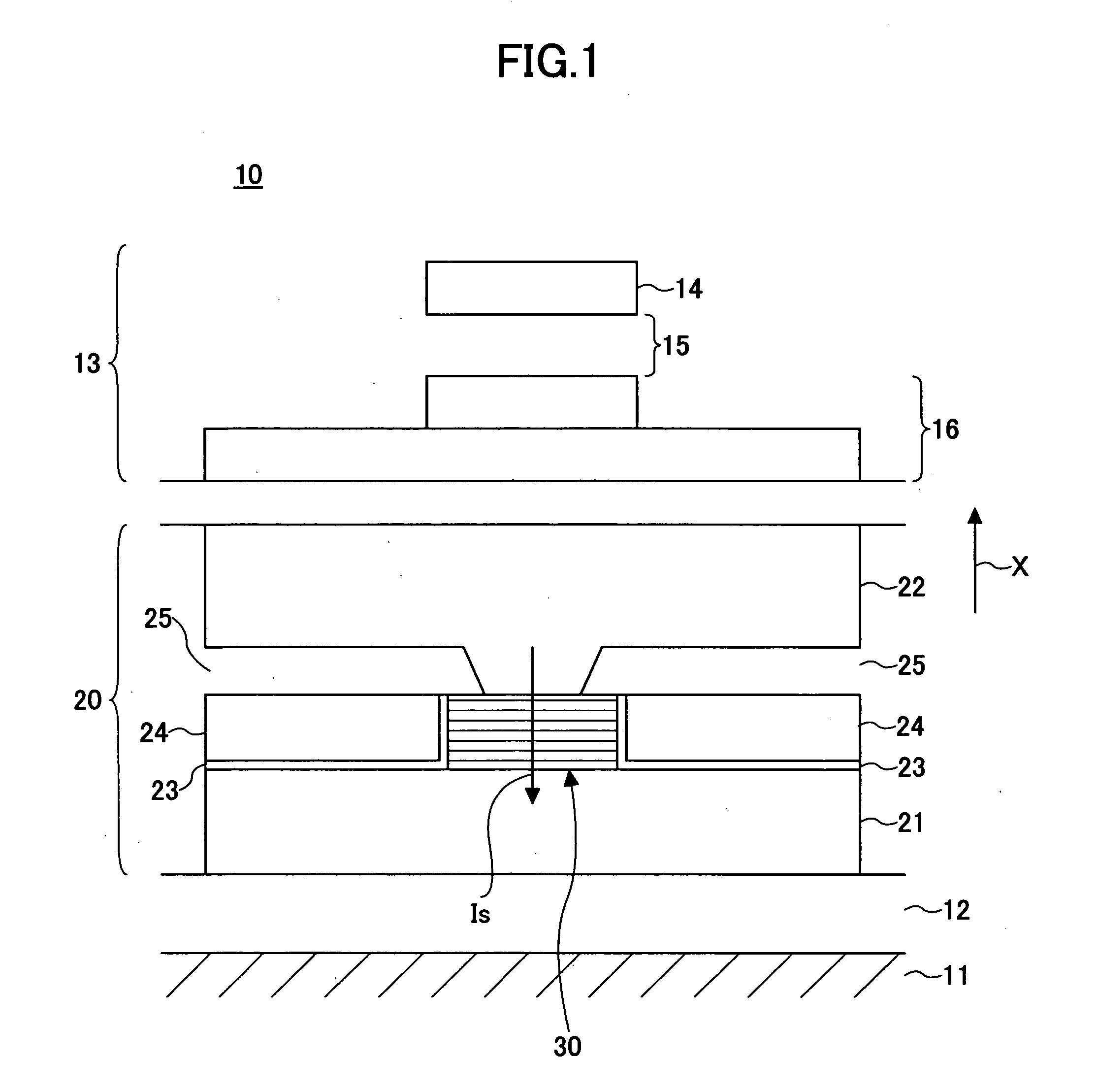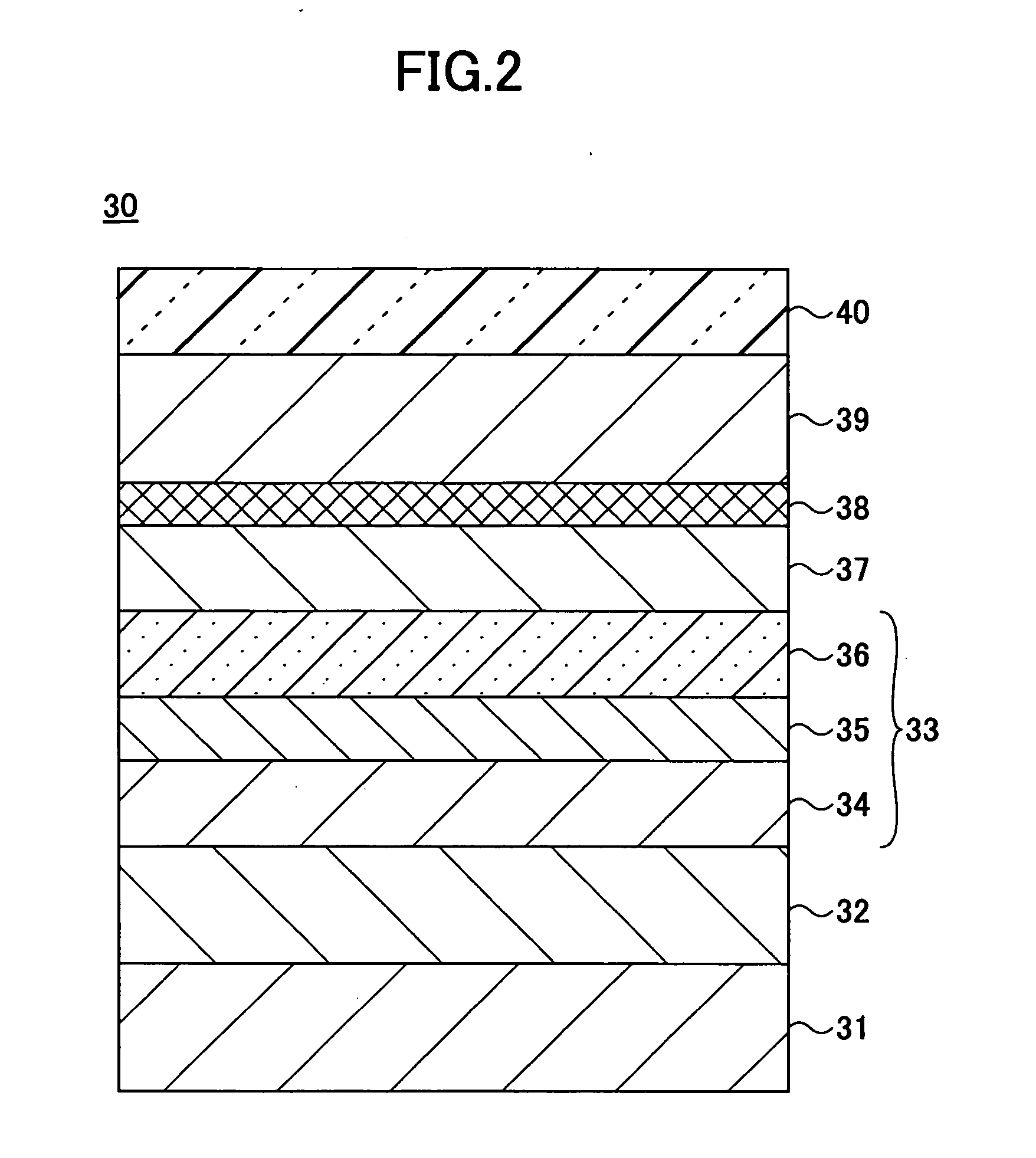Magnetoresistive element, magnetic head, magnetic storage unit, and magnetic memory unit
a technology of magnetoresistance and magnetic head, applied in the field of magnetoresistance elements and magnetic heads, can solve the problems of reducing the output of the magnetoresistance element, reducing the substantial change in the magnetoresistance, and causing the performance to be affected, and achieve good sensitivity
- Summary
- Abstract
- Description
- Claims
- Application Information
AI Technical Summary
Benefits of technology
Problems solved by technology
Method used
Image
Examples
first embodiment
[0053] A description is given of a composite magnetic head including a magnetoresistive element and an induction-type recording element according to a first embodiment of the present invention.
[0054]FIG. 1 is a diagram showing part of the medium opposing surface of a composite magnetic head 10 according to the first embodiment. In FIG. 1, the direction of the arrow X indicates the direction of movement of a magnetic recording medium (not graphically illustrated) opposing a magnetoresistive element 20.
[0055] Referring to FIG. 1, the magnetic head 10 includes the magnetoresistive element 20 formed on a flat ceramic substrate 11 of Al2O3—TiC or the like serving as the base body of a head slider, and an induction-type recording element 13 formed thereon.
[0056] The induction-type recording element 13 includes an upper magnetic pole 14, a lower magnetic pole 16, a yoke (not graphically illustrated) connecting the upper magnetic pole 14 and the lower magnetic pole 16 magnetically, and a...
example implementation
[0119] In an example implementation, magnetoresistive elements having the configuration of the GMR film 80 of the fifth example of the first embodiment shown in FIG. 6 were made. The specific configuration of the GMR films of Samples No. 1 through No. 20 of the example implementation is shown below. The parenthesized numeric values show film thickness, which remains the same through the example implementation.
[0120] Underlayer: NiCr (4 nm)
[0121] Lower antiferromagnetic layer: IrMn (5 nm)
[0122] Lower first fixed magnetization layer: Co60Fe40 (3.5 nm)
[0123] Lower non-magnetic coupling layer: Ru (0.7 nm)
[0124] Lower interface magnetic layer: CoFe (0.5 nm)
[0125] Lower second fixed magnetization layer: Co100-X-YMnXAlY
[0126] Lower second diffusion prevention layer: CoFe (0.5 nm)
[0127] Lower non-magnetic metal layer: Cu (3.5 nm)
[0128] Lower first diffusion prevention layer: CoFe (0.5 nm)
[0129] Free magnetization layer: Co100-X-YMnXAlY
[0130] Upper first diffusion prevention layer...
second embodiment
[0157] A magnetic head according to a second embodiment of the present invention includes a magnetoresistive element having a tunneling magnetoresistive (TMR) film. The magnetic head according to the second embodiment may have a configuration substantially the same as that of the magnetic head 10 shown in FIG. 1 except that a TMR film replaces the GMR film 30 forming the magnetoresistive element 20 of the magnetic head 10. Accordingly, a description of the magnetic head according to the second embodiment is omitted. A description is given below of five examples (first through fifth examples) with respect to the TMR film forming the magnetoresistive element 20. Any of the TMR films of the first through fifth examples may be applied to the magnetoresistive element 20.
[0158]FIG. 11 is a cross-sectional view of a TMR film 90 of the first example forming the magnetoresistive element 20 according to the second embodiment. In FIG. 11, the same elements as those described above are referre...
PUM
 Login to View More
Login to View More Abstract
Description
Claims
Application Information
 Login to View More
Login to View More - R&D
- Intellectual Property
- Life Sciences
- Materials
- Tech Scout
- Unparalleled Data Quality
- Higher Quality Content
- 60% Fewer Hallucinations
Browse by: Latest US Patents, China's latest patents, Technical Efficacy Thesaurus, Application Domain, Technology Topic, Popular Technical Reports.
© 2025 PatSnap. All rights reserved.Legal|Privacy policy|Modern Slavery Act Transparency Statement|Sitemap|About US| Contact US: help@patsnap.com



